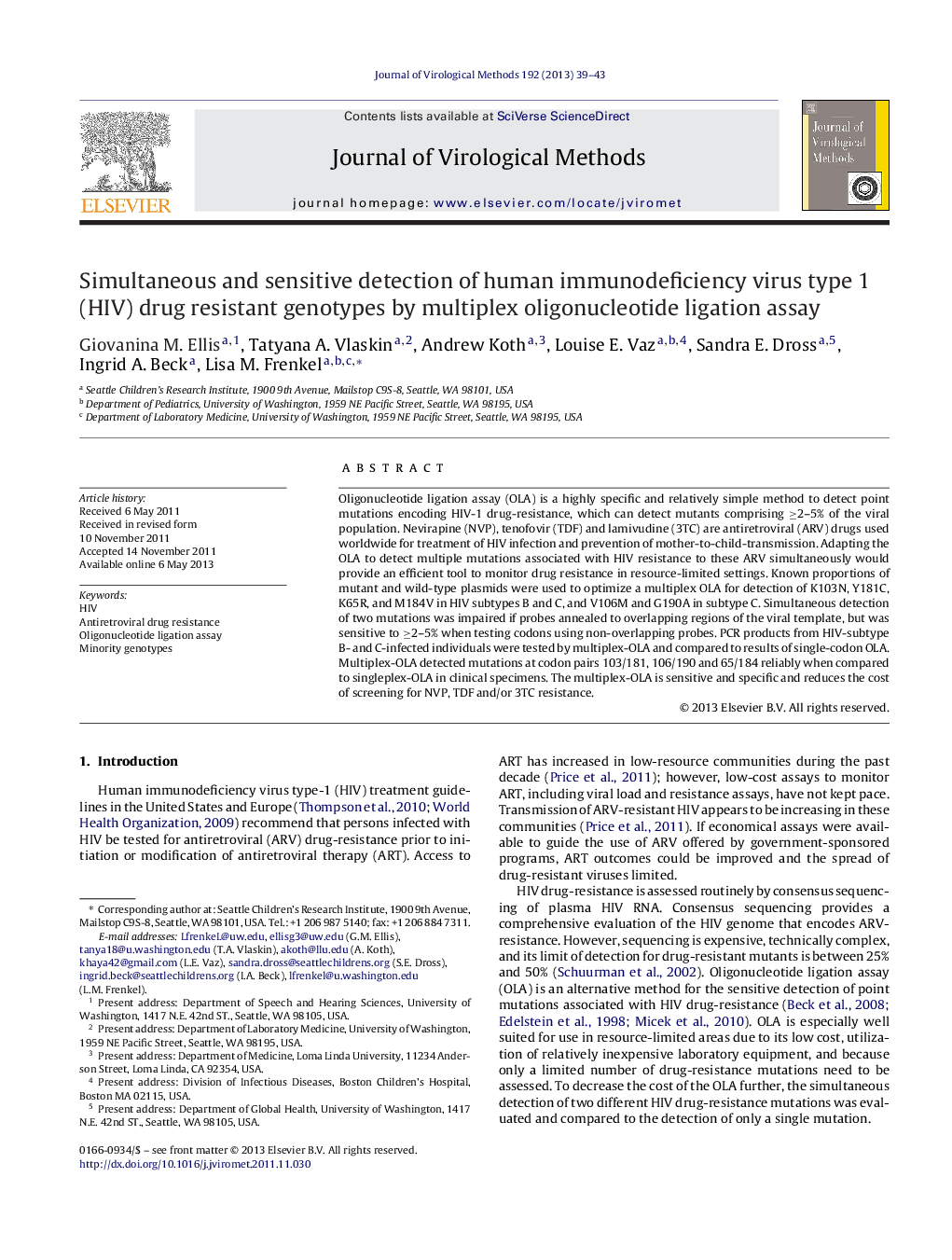| Article ID | Journal | Published Year | Pages | File Type |
|---|---|---|---|---|
| 6133898 | Journal of Virological Methods | 2013 | 5 Pages |
Abstract
Oligonucleotide ligation assay (OLA) is a highly specific and relatively simple method to detect point mutations encoding HIV-1 drug-resistance, which can detect mutants comprising â¥2-5% of the viral population. Nevirapine (NVP), tenofovir (TDF) and lamivudine (3TC) are antiretroviral (ARV) drugs used worldwide for treatment of HIV infection and prevention of mother-to-child-transmission. Adapting the OLA to detect multiple mutations associated with HIV resistance to these ARV simultaneously would provide an efficient tool to monitor drug resistance in resource-limited settings. Known proportions of mutant and wild-type plasmids were used to optimize a multiplex OLA for detection of K103N, Y181C, K65R, and M184V in HIV subtypes B and C, and V106M and G190A in subtype C. Simultaneous detection of two mutations was impaired if probes annealed to overlapping regions of the viral template, but was sensitive to â¥2-5% when testing codons using non-overlapping probes. PCR products from HIV-subtype B- and C-infected individuals were tested by multiplex-OLA and compared to results of single-codon OLA. Multiplex-OLA detected mutations at codon pairs 103/181, 106/190 and 65/184 reliably when compared to singleplex-OLA in clinical specimens. The multiplex-OLA is sensitive and specific and reduces the cost of screening for NVP, TDF and/or 3TC resistance.
Related Topics
Life Sciences
Immunology and Microbiology
Virology
Authors
Giovanina M. Ellis, Tatyana A. Vlaskin, Andrew Koth, Louise E. Vaz, Sandra E. Dross, Ingrid A. Beck, Lisa M. Frenkel,
